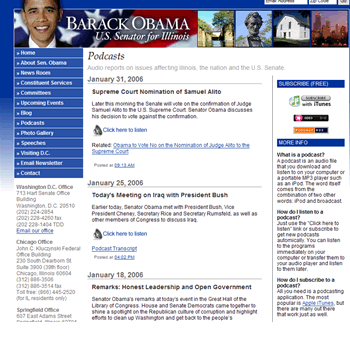This planned Exhibit on the Haunting of Geocities was left out of
the final version of Chapter 12: The Political Economy of New Media for
reasons of contemporaneity and space.
Geocities, first founded in 1994, now owned by Yahoo!, is a web site
hosting service. It provides free web space for non-commercial use,
supported by banner advertising, to anyone wanting to set up a basic web
site. The business model upon which the service was based was simple: in
return for providing a home in cyberspace to ordinary web users, the
company would sell advertising space to other companies wishing to reach
the millions of eyeballs that would naturally be drawn to the many web
sites (initially labelled 'homesteads') that would eventually find a
place in the Geocities 'neighbourhoods'. By 1999, Geocities had
increased the intrusiveness of its advertising, but it still enjoyed a
massive user base, making it among the top five destinations on the web
(Gurak and Logie, 2003: 34). In the same year, Yahoo! purchased the
company, turning it into Yahoo! Geocities and immediately publishing new
terms of service. This seemingly innocuous move caused outrage among a
significant proportion of former Geocities users.
At issue was intellectual property. Who 'owned' the content of the
hundreds of thousands of Geocities web sites? The original Geocities
terms of service included certain requirements on the part of its
members. The company reserved the right to take down commercial or
offensive sites, for instance. But the company made no claim to
ownership of the users' content. In stark contrast, Yahoo!'s new terms
claimed the 'royalty-free, perpetual, irrevocable, non-exclusive and
fully sublicensable right and license to use, reproduce, modify, adapt,
publish, translate, create derivative works from, distribute, perform
and display such Content (in whole or part) worldwide and/or to
incorporate it in other works in any form, media or technology nbow
known or later developed' (quoted in Gurak and Logie, 2003: 34-35). This
was an extraordinarily far-reaching claim, and one that understandably
met with much resistance.
By the following day, thousands of Geocities members had expressed their
disgruntlement with Yahoo! and had started to band together to protest
against the move. Spearheading the campaign was an unemployed software
developer named Jim Townsend. Townsend established a website and issued
a manifesto urging fellow Geocities members to boycott the new Yahoo!
service, raise the matter with the press and politicians, and undertake
symbolic forms of online protest, such as creating and disseminating
satirical banners and graphics.
By far the most effective protests came in the form of 'haunted' web
sites. These took the form of ordinary Geocities members' sites that had
been deliberately 'defaced' through the removal of content. Links to
Townsend's site were displayed on many haunted sites, mainly due to the
fact that his site rapidly emerged as the place to visit for updates and
his critique of the Yahoo! terms of service. Within just two weeks,
Townsend's site had received over one million hits and most major news
media had picked up the story, resulting in the beginnings of an exodus
away from Geocities. Yahoo! had responded by posting two revised terms
of service, the second of which had proved acceptable to Lawrence and
the protestors. Yahoo!'s revised terms withdrew from a claim to
ownership of content and instead restricted use of members' content to
'displaying, distributing and promoting' Geocities sites (quoted in
Gurak and Logie, 2003: 42). In the space of around nine days, Yahoo! had
been forced to reverse its policy.
References
Gurak, L. J. and Logie, J. (2003) 'Internet
Protests, From Text To Web' in McCaughey, M. and Ayers, M. D. (eds) Cyberactivism:
Online Activism in Theory and Practice (Routledge, London).
